She was asked the question, “How do you put on pants?” Air Force Veteran Judy McCombs answered with a laugh, “In bed with a lot of wiggling. It’s like putting on skinny jeans.”
The question was actually quite serious and her response was significant to Erika Morales-Hernandez, a senior student in clothing engineering, completing her capstone project at SUNY’s Fashion Institute of Technology (FIT).
Morales-Hernandez and four other students are working together to engineer clothing that is comfortable, fashionable, and easy to put on for Veterans with disabilities.
McCombs, a patient at VA’s St. Albans Community Living Center, was enthusiastic in sharing her experience with clothing with Morales-Hernandez, who took notes and made sketches during their meeting in McCombs’ room. McCombs has multiple medical problems and has been wheelchair-bound for the past three years.
Even during their first meeting, McCombs was able to make meaningful design suggestions to Morales-Hernandez, who describes her designs: “I had designed a cape to be shorter in back to avoid bunching in the back of the wheelchair, but now I understand it has to be shorter in front as well to ensure freedom of movement,” she says. This garment, as with others engineered by the group, uses magnetic snaps or Velcro to make closing and fastening the garment easier.
“Fashion can make a huge difference in your demeanor, self-esteem, and even your personality.”
During a meeting with Anna Smith, also an Air Force Veteran who uses a wheelchair, Morales-Hernandez discussed the challenge of designing something that is both functional and attractive.
Another FIT student, Nastaran Eghtesad, met with Army Veteran Pamela Winfield, who was attacked by a man wielding a samurai sword. Acting as a good samaritan, Winfield lost her arm while saving the life of an elderly neighbor. Winfield and Eghtesad discussed the daily struggles of getting dressed as an amputee.
“It was very helpful to my research to see how I could develop clothing that is amputee and overall disability friendly. Struggles of fastening closures such as zippers and buttons we take for granted, but are challenges that amputees must overcome every day. With the feedback from the interview, I am able to come up with alternate closures for garments and certain functions that amputees would appreciate,” said Eghtesad. She is designing a button-up shirt with interchangeable sleeves, and also slacks.
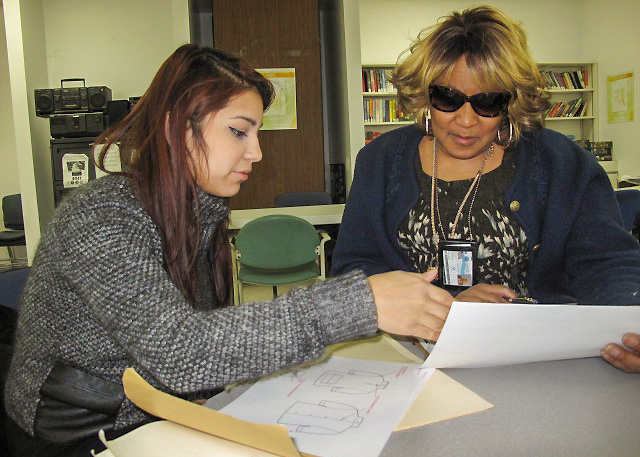
FIT Student Erika Morales-Hernandez meets with Army Veteran Anna Smith
Eghtesad adds, “There will be trials of samples and fittings using muslin and the final fabric to make sure the clothing fits and functions properly. Most importantly, the clothing will not lose style integrity, because fashion can make a huge difference in your demeanor, self-esteem, and even personality. Winfield was a great inspiration, I am honored to work with her on this project.”
The students are still debating fabrics and color choices. “As of right now, we are considering crepes, knits, and wool fabrics for a fall/winter line. Color-wise, we were thinking of blacks, navys, whites, red and camel. We want these clothes to be appealing in a wide range of age.”
Eghtesad has also met with occupational therapist Roxanne Disla, prosthetic and orthotic technologist Ed Sliwinski, who wears a left leg prosthesis, and prosthetist Christopher Fantini, to discuss details such as which fabrics are least likely to catch on prosthetic devices that are made of thermoplastics and acrylic resins, and often incorporate metal.
All the students in the group had a charge from their professor, Luz Pascal, to engineer garments that will improve someone’s life. The students are consulting with individuals who have neurological problems that create difficulties when they get dressed and present challenges when they are looking for variety in clothing.
The students had multiple meetings with the Veterans until the garments were designed, fitted and produced, and presented at a final session for FIT professors, other students in this class, and the Veterans they consulted.
Fashionistas at the Final Presentations
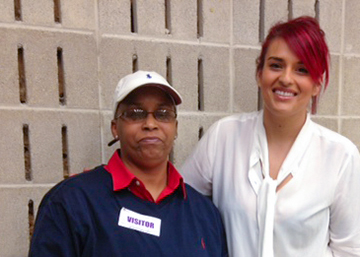
Army Veteran Pam Winfield (L) and clothing engineering student Nastaran Eghtesad
Air Force Veteran Anna Smith proved herself to be a model who engages with her audience, at the capstone presentation held in April at SUNY’s Fashion Institute of Technology. Smith hammed it up a little for an appreciative group of students and staff, but the presentation of garments especially engineered for people with disabilities was all serious.
Army Veteran Pamela Winfield attended as part of the audience. Smith modeled an outfit designed for ease in dressing and undressing featuring a blouse design inspired by Winfield, who wears a high-tech prosthetic left hand. The garment has interchangeable sleeves attached with velcro that allows for versatility and ease of wear.
This article was originally published on Inside Veterans Health.
Topics in this story
More Stories
VA promotes early nutrition intervention for chronic kidney disease with targeted programs like Heathier Kidneys Through Your Kitchen.
VA Research Advisory Committee on Gulf War Veterans’ Illnesses hosting Veteran Engagement Sessions in Phoenix for 1990-91 Gulf War Veterans.
Navy Veteran and president of the American Medical Association got a colonoscopy and encourages other Veterans to do the same.

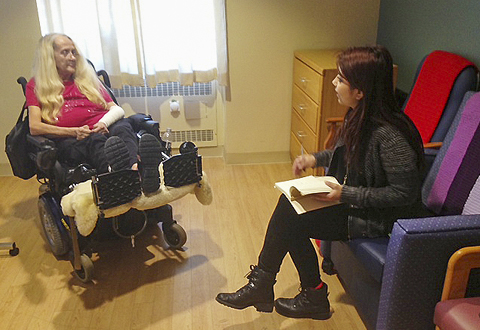
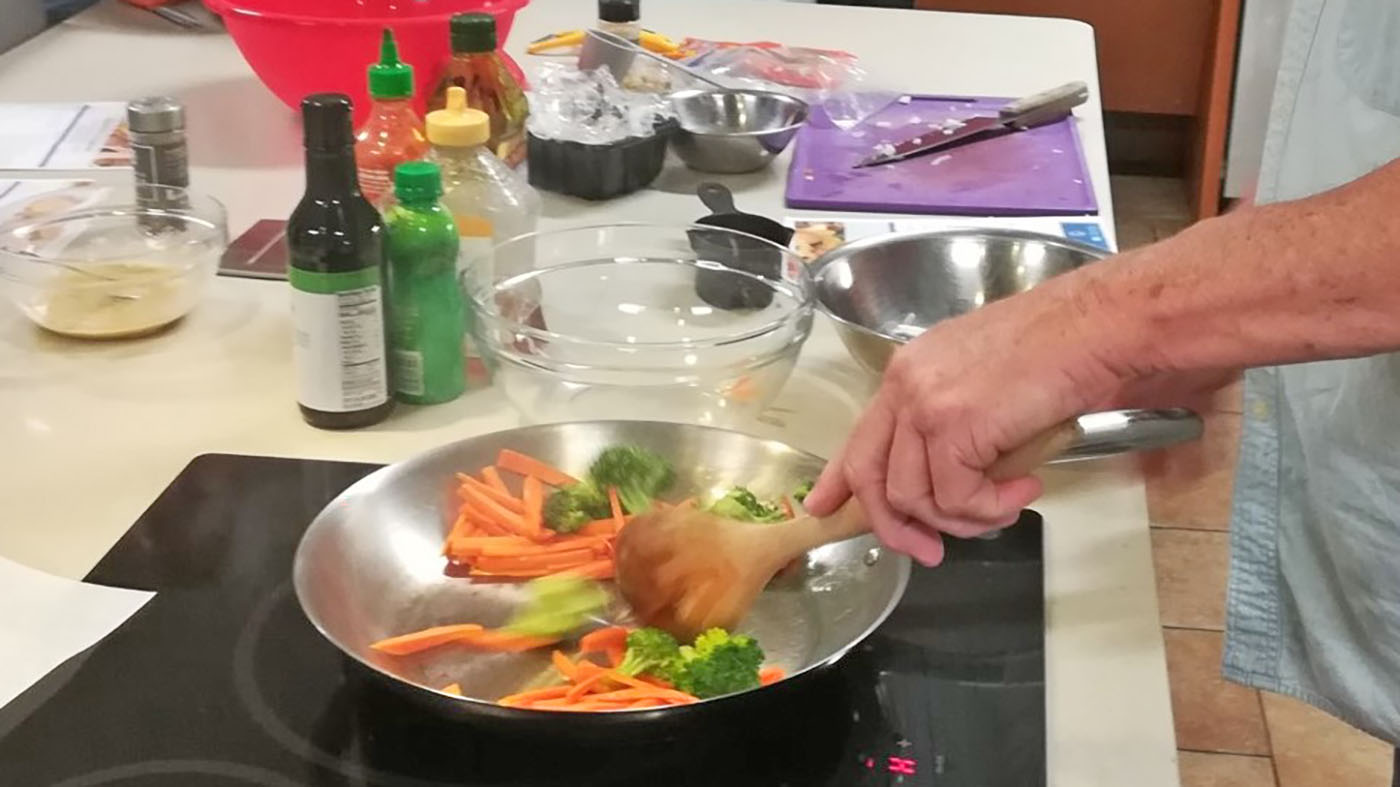

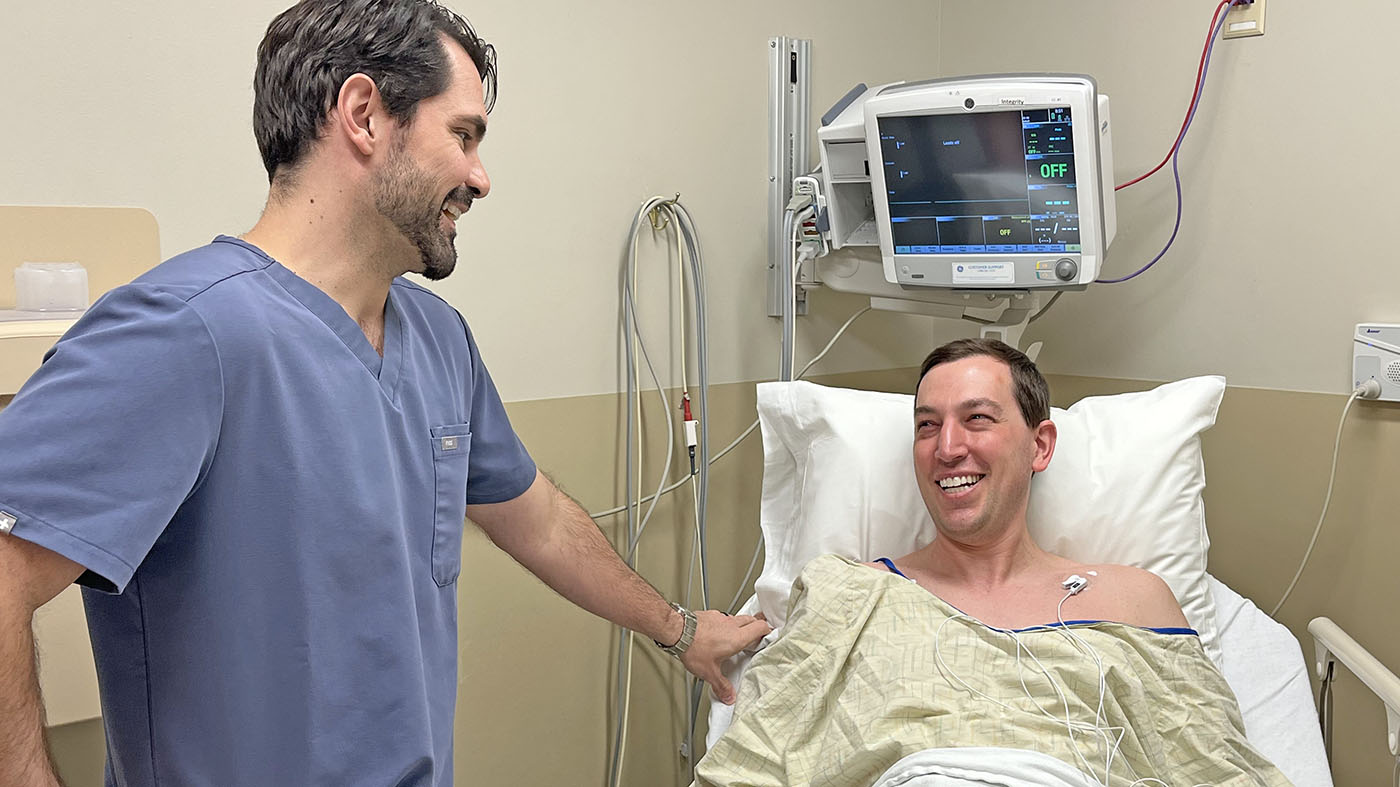


What an undiscussed topic brought to life. It was so interesting to hear Judy speak about her experience with wearing prosthetics and how such a simple task like putting pants on for a normal able bodied person is such a different process for Judy on a daily basis.
I can understand how making clothing that caters for people who wear prosthetics fashionable, can give greater confidence and boost self-esteem. Clothing is such a big part of how people identify who we are able bodied or not it would be great to maybe see the students contact a fashionable label and get them onboard also and perhaps get some free PR out of the project.
This is really nice and all but I see nothing here for us men! We have issues as well. I wear shorts 99% of the time as it is a pain to put on and take off pants ( I’m a RBKA ), not to mention trying to change shoes on my prosthetic foot! Maybe that should do some work in that area as well!!!!!